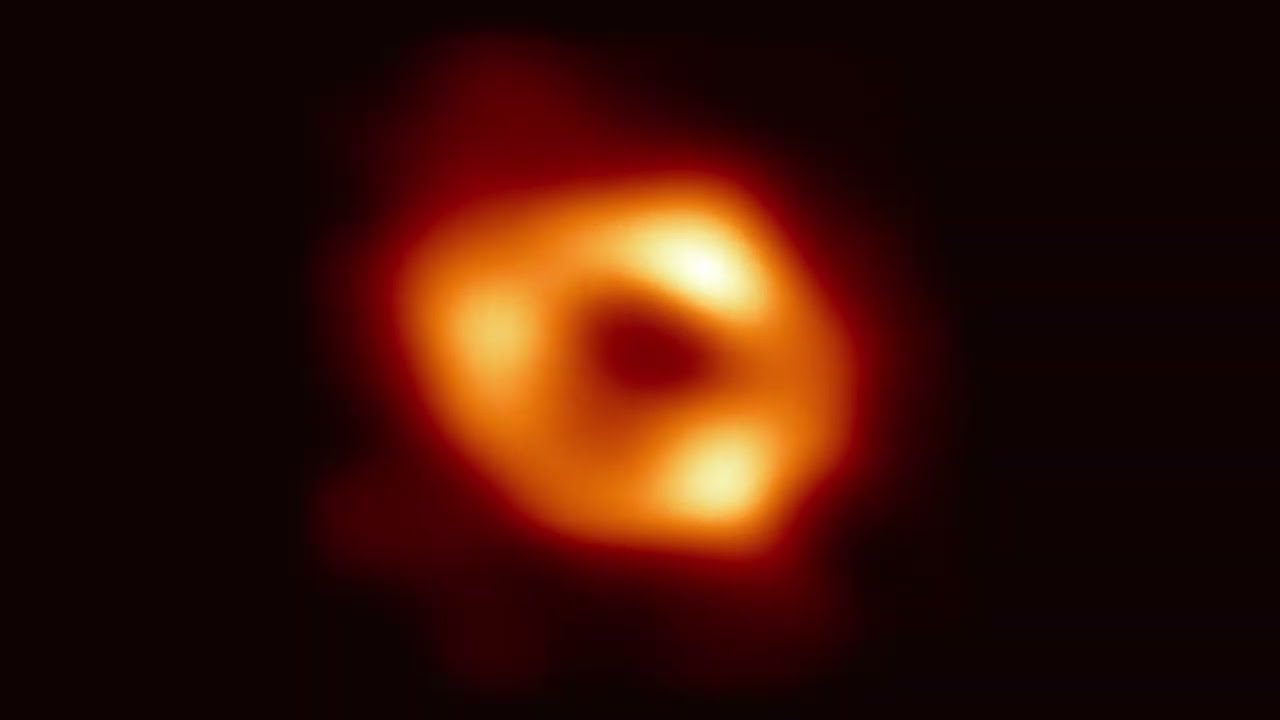地球から私たちの天の川銀河の中心にあるブラックホール(Sgr A *)にズームしていく動画。
動画ではまず、地球から天の川に向かって飛び立ち、天の川の中心部のガスと塵が濃い場所に向かっていきます。この領域の星々は、ESOの望遠鏡VLT/VLTIで何十年もの間観測されていて、ブラックホールの巨大な引力によってその近くの星々が猛スピードで動いている様子が観測されてきた場所です。 その後さらに天の川の中心に近づいていき、動画の最後では、今回EHTによって画像が得られたSgrA*に到達します。明るいガスと塵の輪に囲まれた暗い影としてブラックホールの姿が捉えられています。
この動画は、さまざまな望遠鏡によって得られた画像を組み合わせたものです。天の川銀河の星々の様子は可視波長および赤外線で観測されたもので、一方最後のEHTの画像は電波で撮影されたものになります。
クレジット: ESO/L. Calçada, N. Risinger (skysurvey.org), DSS, VISTA, VVV Survey/D. Minniti DSS, Nogueras-Lara et al., Schoedel, NACO, GRAVITY Collaboration, EHT Collaboration (Music: Azul Cobalto)
Watch as this video sequence zooms into the black hole (Sgr A*) at the centre of our galaxy. Beginning with a broad view of the Milky Way, we dive into the dense clouds of gas and dust at our galactic centre. The stars here have been observed with ESO’s Very Large Telescope and ESO’s Very Large Telescope Interferometer for decades, the black hole’s immense gravitational pull distorting the orbits of the stars closest to it. Finally, we arrive at Sgr A*, the first image of which has been captured by the EHT collaboration. The black hole is shown by a dark central region called a shadow, surrounded by a ring of luminous gas and dust.
The various observations used here were taken at different times, by different teams and with different facilities, and put together for the purpose of the zoom effect. The images go from visible wavelengths at the beginning to infrared, with the very final image being taken at radio wavelengths.
Credit: ESO/L. Calçada, N. Risinger (skysurvey.org), DSS, VISTA, VVV Survey/D. Minniti DSS, Nogueras-Lara et al., Schoedel, NACO, GRAVITY Collaboration, EHT Collaboration (Music: Azul Cobalto)
#ブラックホール #いて座A* #EHT








